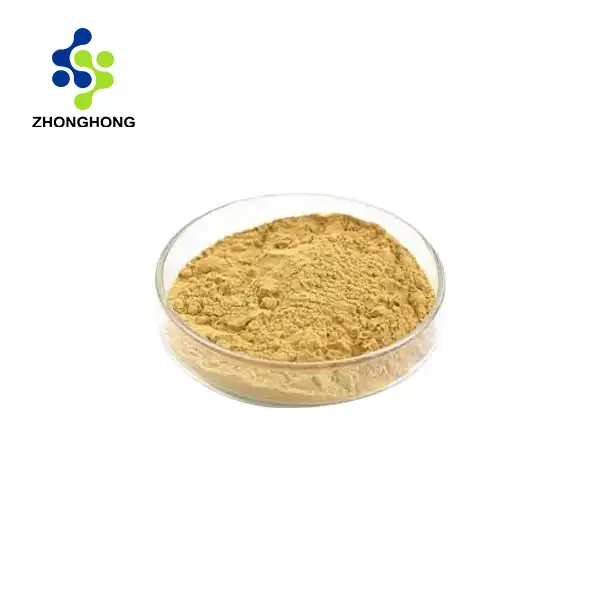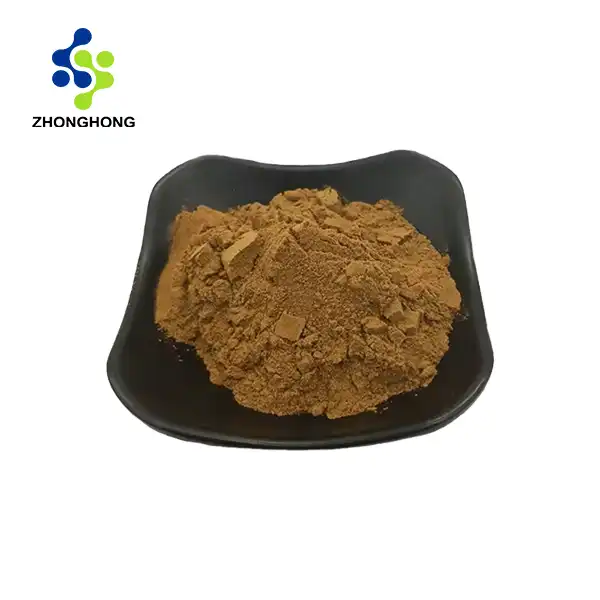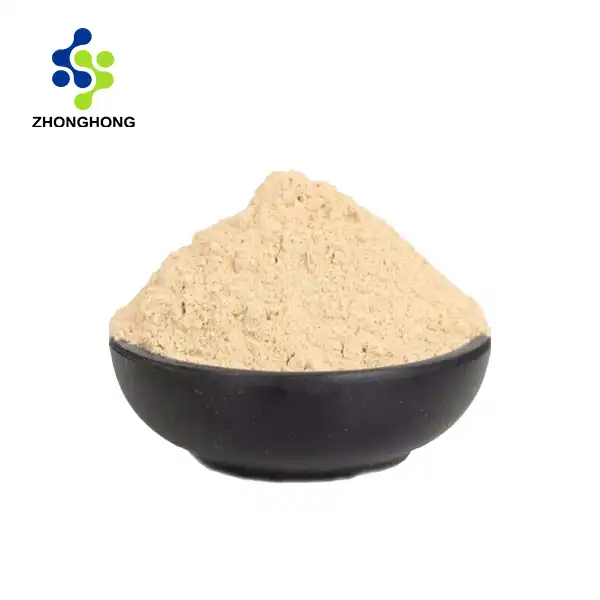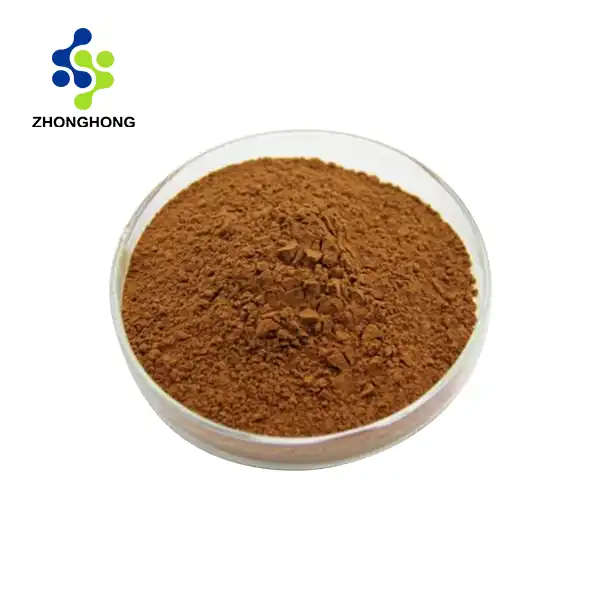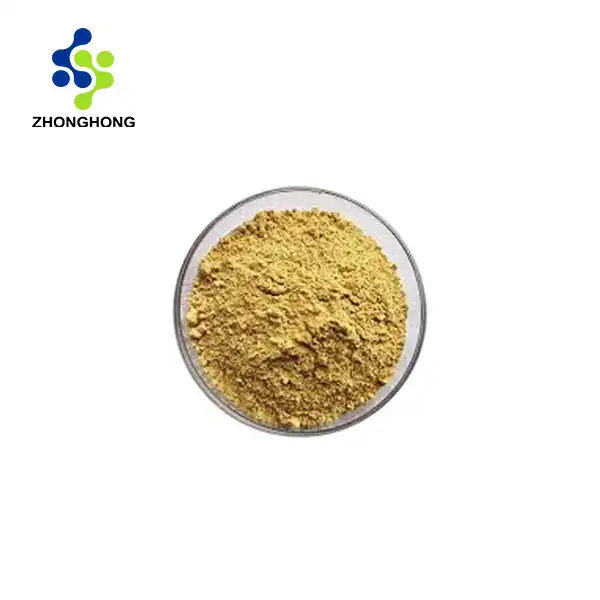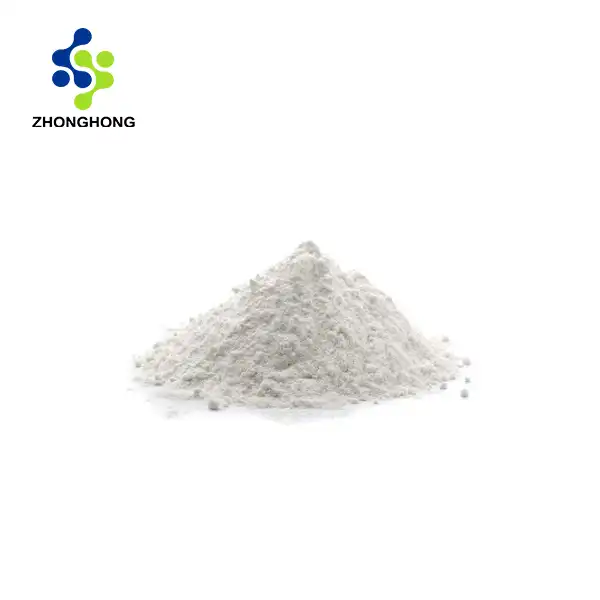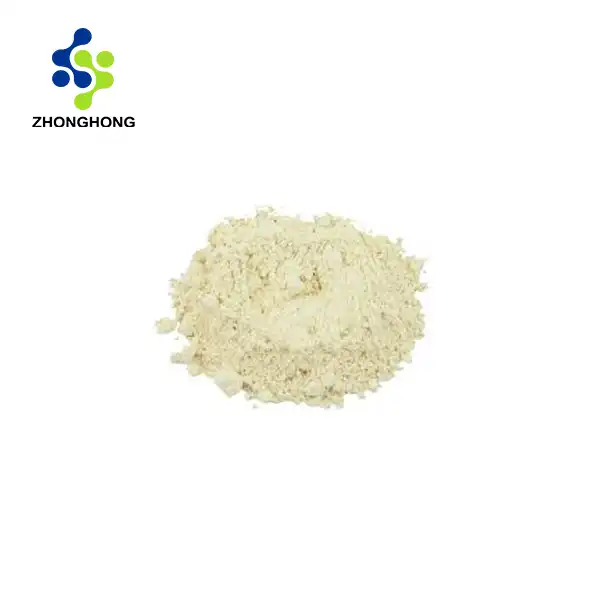CAS: 531-95-3
Purity: 95%/98%
Packaging information: 1G; 100G; 1KG
Equol (4',7-isoflavandiol) is an isoflavandiol[1] estrogen metabolized from daidzein, a type of isoflavone found in soybeans and other plant sources, by bacterial flora in the intestines.[2][3] While endogenous estrogenic hormones such as estradiol are steroids, equol is a nonsteroidal estrogen. Only about 30–50% of people have intestinal bacteria that make equol.
1. Pioneering Natural Health Solutions with Premium Equol
Shaanxi Zhonghong Investment Technology Co., Ltd. is a globally recognized high-tech enterprise specializing in the research, development, and production of plant-based bioactive compounds. With a focus on innovation and sustainability, the company serves industries such as pharmaceuticals, nutraceuticals, and cosmetics. Its Equol, a bioactive isoflavandiol derived from soy isoflavones, stands out as a breakthrough ingredient for hormonal balance and anti-aging applications.
2. Equol: Source and Chemical Profile
Source: Produced via microbial fermentation of soy isoflavones (e.g., daidzein) or extracted from natural sources.
CAS Number: 531-95-3.
Molecular Formula: C₁₅H₁₄O₃.
Molecular Weight: 242.27 g/mol.
EINECS: 208-517-3.
Description: Equol is a non-steroidal estrogen metabolite with potent antioxidant and hormone-modulating properties. It supports menopause relief, skin health, and bone density.
3. Health Benefits and Usage Guidelines
Hormonal Balance: Alleviates hot flashes, night sweats, and other menopausal symptoms.
Bone Health: Enhances calcium retention and reduces osteoporosis risk.
Skin Rejuvenation: Improves collagen synthesis and reduces UV-induced damage.
Antioxidant Activity: Neutralizes free radicals, protecting against cellular aging.
Dosage: 10–50 mg daily, available in capsules, tablets, or powdered formulations.
Precautions: Consult a healthcare provider if pregnant, nursing, or hormone-sensitive (e.g., breast cancer).
4. Product Specifications and Quality Standards
| Parameter | Standard | Testing Method |
|---|---|---|
| Purity | ≥98% | HPLC |
| Heavy Metals (Pb) | <1 ppm | ICP-MS |
| Arsenic (As) | <0.5 ppm | Atomic Absorption Spectrometry |
| Pesticide Residues | Below EU MRLs | GC-MS |
| Microbial Count | <1000 CFU/g | Microbial Analysis |
5. Advanced Production Process
Sourcing: Non-GMO soybeans or microbial strains for fermentation.
Fermentation/Extraction: Microbial conversion of daidzein to Equol or plant-based extraction.
Purification: Chromatography to isolate high-purity Equol.
Crystallization: High-purity crystallization under controlled conditions.
Quality Control: Rigorous testing via HPLC, NMR, and mass spectrometry.
6. Why Partner with Shaanxi Zhonghong?
Scientific Leadership: Collaborates with 5 top universities and holds 20+ patents.
Cutting-Edge Facilities: Utilizes HPLC, NMR, and high-resolution mass spectrometry for 99.9% purity.
Global Network: Supplies customized solutions to 30+ countries across Asia, Europe, and the Americas.
Certifications: cGMP, ISO 9001, FDA, Halal, Kosher, and Organic.
7. Applications Across Industries
Nutraceuticals: Menopause support supplements, bone health formulas.
Cosmetics: Anti-aging creams, hormone-balancing serums.
Functional Foods: Fortified beverages and dietary products.
8. Uncompromising Quality Assurance
Each batch undergoes third-party verification by accredited labs (e.g., SGS, Eurofins). Full traceability from raw materials to finished products ensures compliance with USP, EP, and ICH guidelines.
9. FAQ
Is Equol safe for long-term use?
Yes, it is GRAS (Generally Recognized as Safe) with extensive clinical research backing its safety.
Is it suitable for vegans?
Yes, when produced via microbial fermentation or plant-based methods.
Shelf life?
24 months when stored in a cool, dry environment away from light.
10. Elevate Your Products with Science-Backed Ingredients
Shaanxi Zhonghong Investment Technology Co., Ltd. combines cutting-edge science with sustainable practices to deliver premium Equol for global markets. For samples, technical data sheets, or bulk orders, contact liaodaohai@gmail.com.
References:
U.S. Pharmacopeia (USP) standards for bioactive compounds.
European Food Safety Authority (EFSA) safety assessments.
Peer-reviewed studies in Journal of Clinical Endocrinology & Metabolism.
YOU MAY LIKE
_1728976869676.webp)







